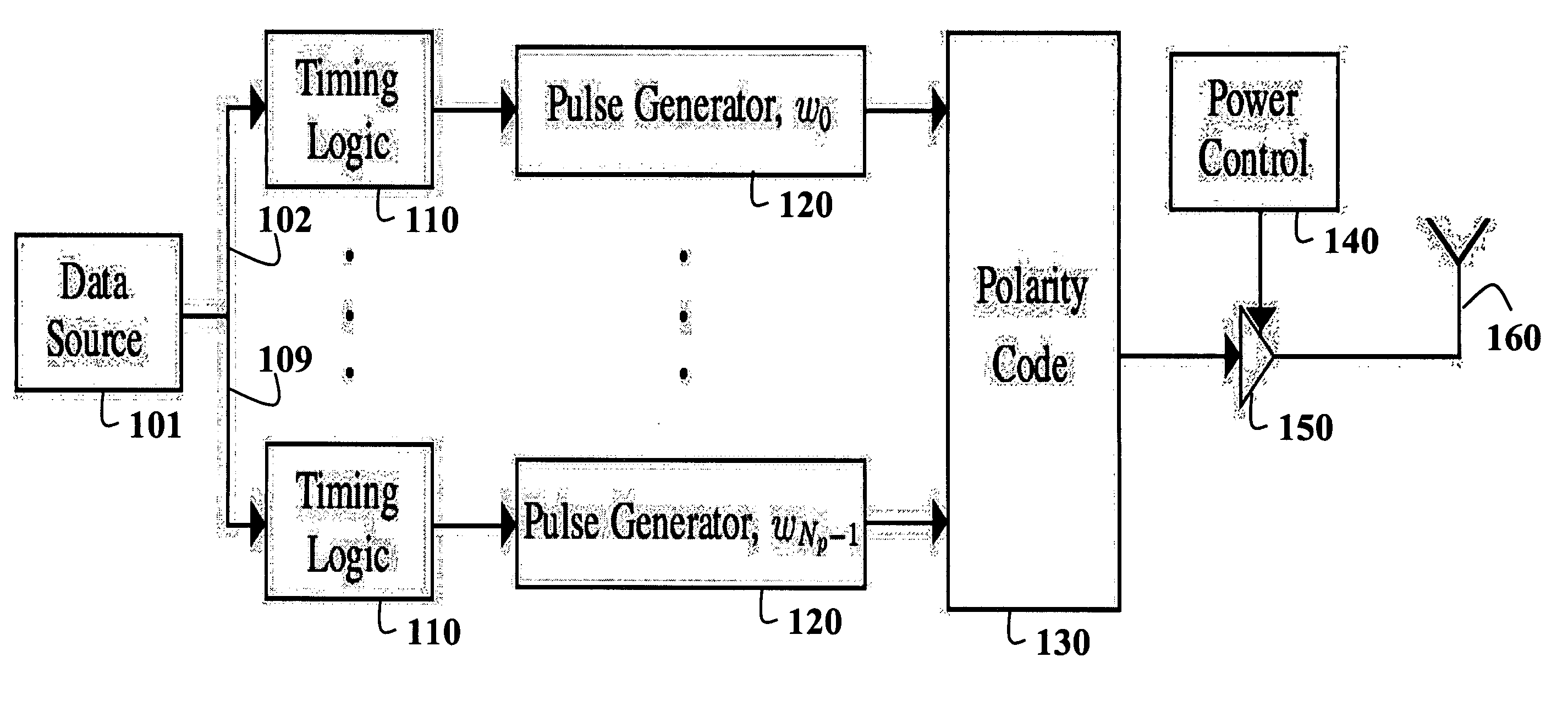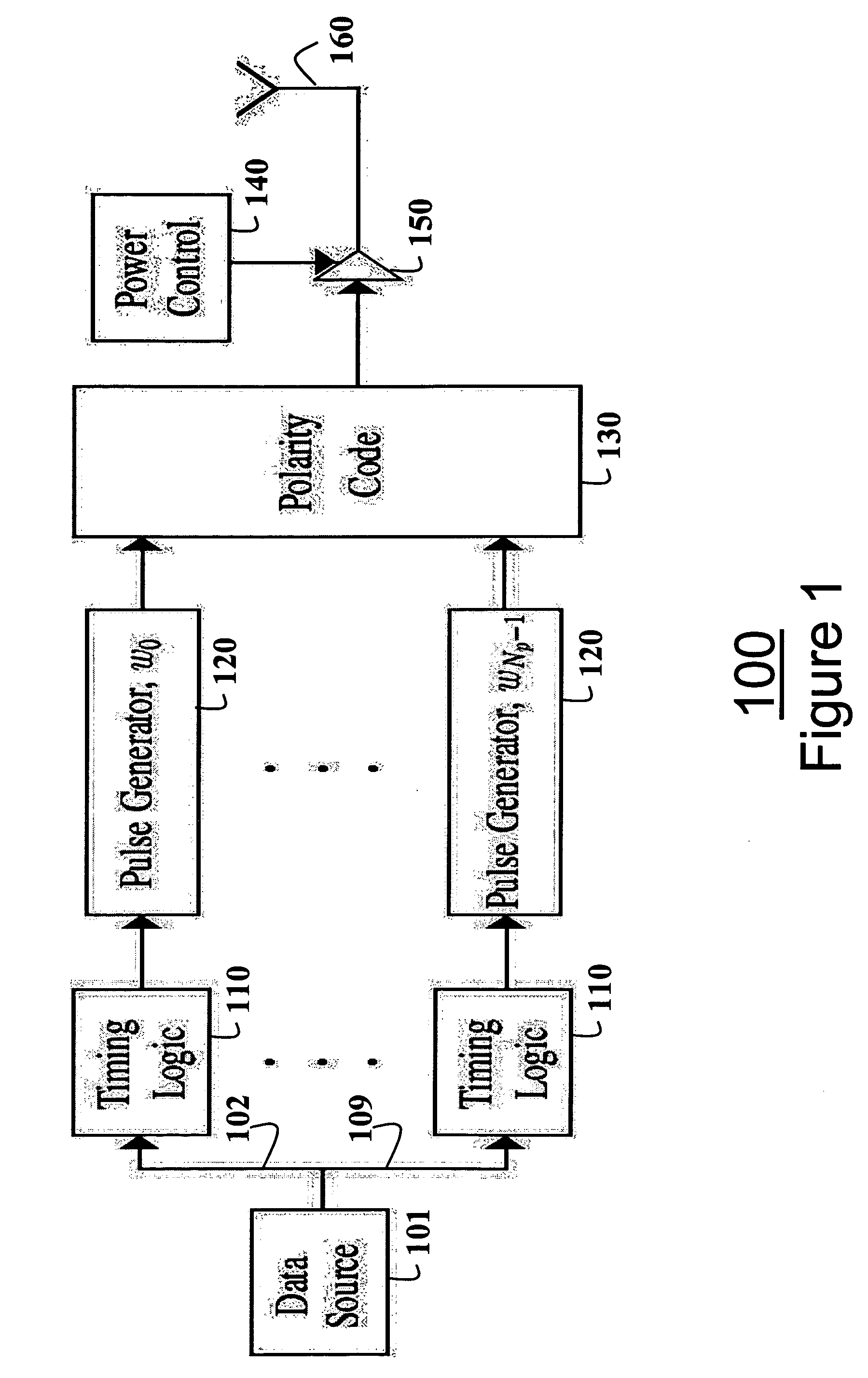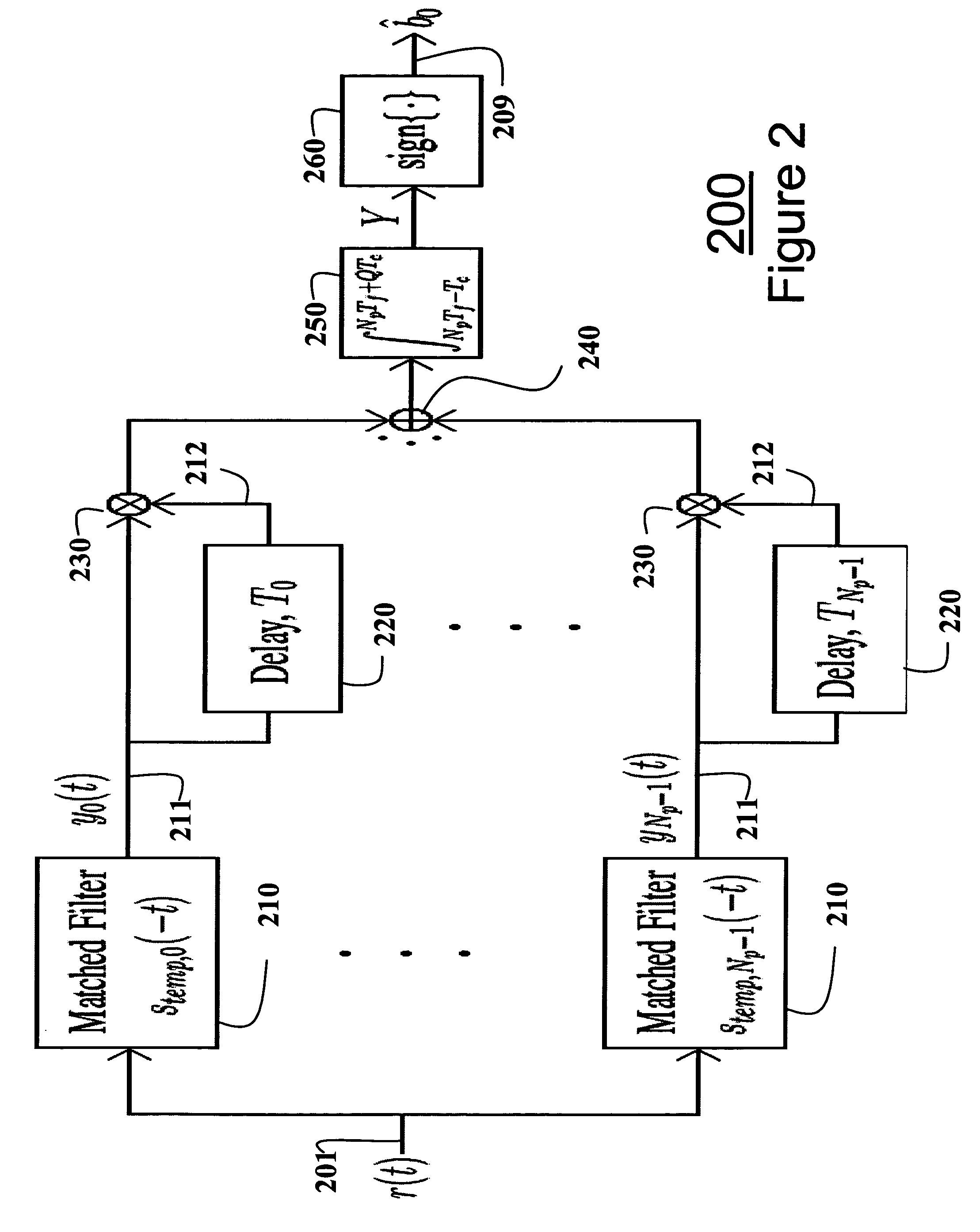Impulse radio systems with multiple pulse types
a radio system and pulse type technology, applied in the field of radio communication systems, can solve the problems of small interference to narrow bandwidth receivers, low performance, and receivers that cannot fully resolve all multi-path components, and achieve the effect of reducing interferen
- Summary
- Abstract
- Description
- Claims
- Application Information
AI Technical Summary
Benefits of technology
Problems solved by technology
Method used
Image
Examples
Embodiment Construction
[0018] Signal Structure
[0019] A transmitted signal s(t) for an ultra wide bandwidth (UWB) system according to the invention is expressed as s(t)=1Nf∑i=-∞∞∑n=0Np-1sn,i(t),(1)
where Nf is the number of pulses per information bit or data symbol, Np is the number of different pulse types, with n being an index for the pulse type, and i being an index for the data symbol. For simplicity of the expressions, the number of pulses Nf is assumed to be an even multiple of the number of data symbols. However, this is not required. The variable sn,i(t) is expressed as sn,i(t)=∑j=iNf / (2Np)(i+1)Nf2Np-1[djNp+nwn(t-(2Npj+n)Tf-cjNp+nTc)+b⌊2Npj / Nf⌋djNp+nwn(t-(2Npj+n)Tf-cjNp+nTc-Tn)].(2)
[0020] In equation (2), wn(t) is the UWB pulse of type n, Tf is the frame interval, and Tc is the chip interval. A time-hopping (TH) code is denoted by cj, which is an integer taking values in the set {0, 1, . . . , Nc−1}, with Nc being the number of chips per frame. This prevents catas...
PUM
 Login to View More
Login to View More Abstract
Description
Claims
Application Information
 Login to View More
Login to View More - R&D
- Intellectual Property
- Life Sciences
- Materials
- Tech Scout
- Unparalleled Data Quality
- Higher Quality Content
- 60% Fewer Hallucinations
Browse by: Latest US Patents, China's latest patents, Technical Efficacy Thesaurus, Application Domain, Technology Topic, Popular Technical Reports.
© 2025 PatSnap. All rights reserved.Legal|Privacy policy|Modern Slavery Act Transparency Statement|Sitemap|About US| Contact US: help@patsnap.com



